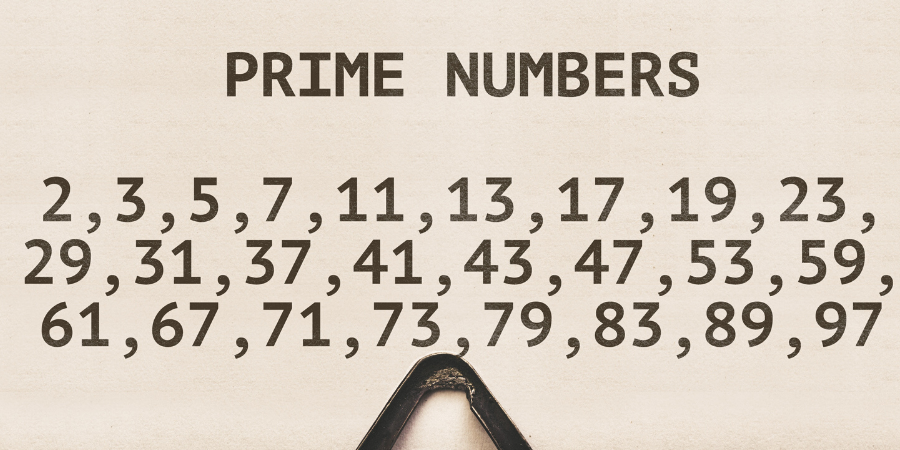First 100 Prime Numbers 1 to 100
Prime Number

Prime numbers are the building blocks of mathematics. These special numbers are greater than 1 and divisible only by 1 and themselves, making them unique and fascinating. This article dives deep into the concept of prime numbers and lists the first 100 prime numbers between 1 and 1000, ensuring a comprehensive understanding.
What Are Prime Numbers?
A prime number is a natural number greater than 1 that has no divisors other than 1 and itself. For example, 2, 3, 5, and 7 are prime numbers.
Characteristics of Prime Numbers:
- A prime number has exactly two factors: 1 and itself.
- It is always greater than 1.
- The number 2 is the smallest and the only even prime number.
- All other even numbers are not prime because they are divisible by 2.
Importance of Prime Numbers
Prime numbers play a crucial role in various fields, including:
- Mathematics: Prime numbers are used in number theory and are foundational for many mathematical proofs.
- Cryptography: Modern encryption techniques, such as RSA, rely on the properties of prime numbers.
- Computing: Algorithms for prime number generation are essential in coding and data processing.
- Science: Prime numbers appear in patterns in physics, astronomy, and other sciences.
How to Identify a Prime Number
Steps to Check if a Number is Prime:
- Check if the number is greater than 1.
- Divide the number by all integers less than its square root.
- If no divisor other than 1 and the number itself exists, it is prime.
List of First 100 Prime Numbers
Prime Numbers Between 1 to 100
The prime numbers in this range are:
2, 3, 5, 7, 11, 13, 17, 19, 23, 29, 31, 37, 41, 43, 47, 53, 59, 61, 67, 71, 73, 79, 83, 89, 97
Prime Numbers Between 101 to 500
101, 103, 107, 109, 113, 127, 131, 137, 139, 149, 151, 157, 163, 167, 173, 179, 181, 191, 193, 197, 199, 211, 223, 227, 229, 233, 239, 241, 251, 257, 263, 269, 271, 277, 281, 283, 293, 307, 311, 313, 317, 331, 337, 347, 349, 353, 359, 367, 373, 379, 383, 389, 397, 401, 409, 419, 421, 431, 433, 439, 443, 449, 457, 461, 463, 467, 479, 487, 491, 499
Prime Numbers Between 501 to 1000
503, 509, 521, 523, 541, 547, 557, 563, 569, 571, 577, 587, 593, 599, 601, 607, 613, 617, 619, 631, 641, 643, 647, 653, 659, 661, 673, 677, 683, 691, 701, 709, 719, 727, 733, 739, 743, 751, 757, 761, 769, 773, 787, 797, 809, 811, 821, 823, 827, 829, 839, 853, 857, 859, 863, 877, 881, 883, 887, 907, 911, 919, 929, 937, 941, 947, 953, 967, 971, 977, 983, 991, 997
Applications of Prime Numbers
Data Security:
- Prime numbers are essential in cryptography, ensuring secure online transactions.
Mathematical Research:
- They are used in algorithms for solving complex mathematical problems.
Pattern Analysis:
- Prime numbers are studied to understand natural patterns and sequences.
Engineering:
- Used in signal processing and error detection in coding systems.
Fun Facts About Prime Numbers
- The number 2 is the only even prime number.
- There are infinitely many prime numbers.
- Twin primes, such as (11, 13) and (17, 19), are pairs of prime numbers that differ by 2.
- The largest known prime number (as of 2025) has millions of digits and is discovered using computers.
Why Understanding Prime Numbers Matters
Prime numbers are not just abstract mathematical concepts; they are integral to the functioning of our digital world. From securing online communications to understanding the universe, their significance is vast.
Conclusion
Prime numbers are fascinating, fundamental, and ubiquitous. Their unique properties make them invaluable in mathematics, science, and technology. Whether you are a student, a mathematician, or a tech enthusiast, understanding prime numbers is essential for delving deeper into the mysteries of numbers and their applications.





